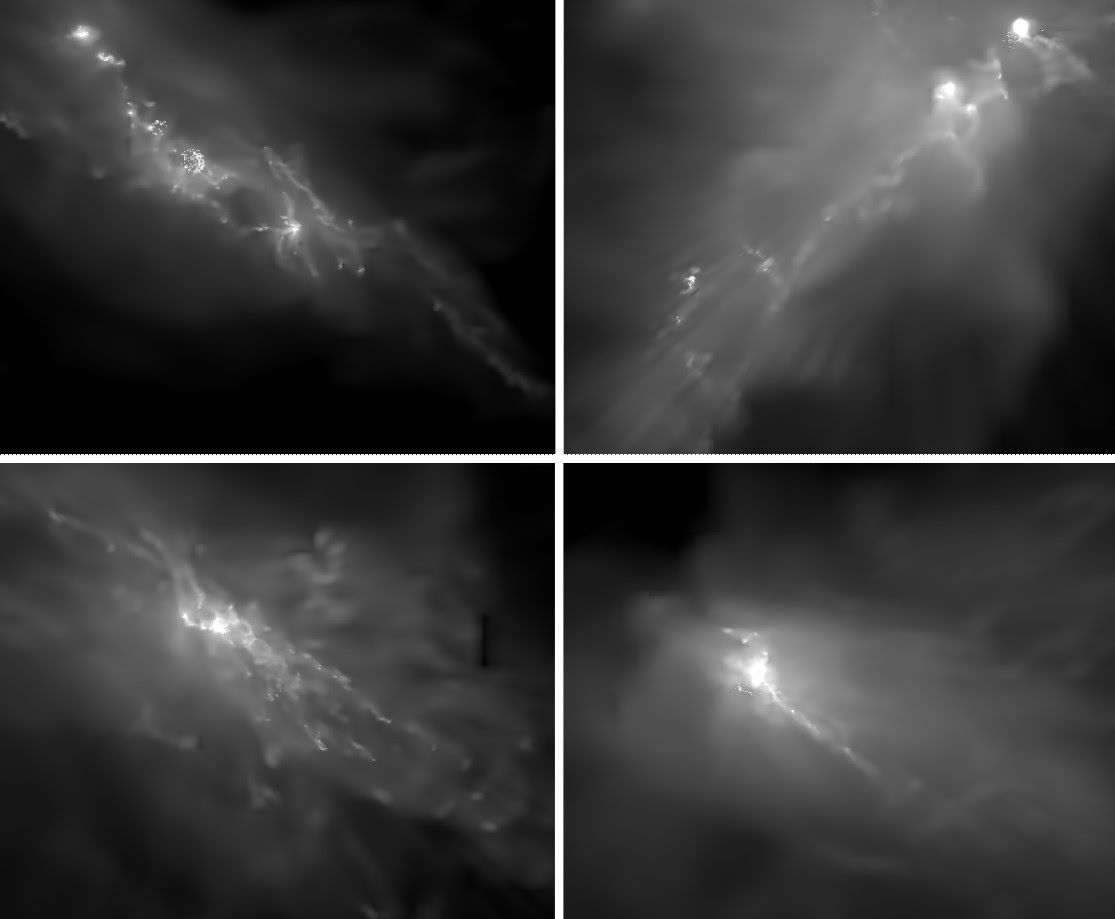Scientists use supercomputers to study the first galaxies, find out how the universe began

Amidst the infinite expanse of the cosmos, a groundbreaking research study led by Dr. Ke-Jung Chen from the Institute of Astronomy and Astrophysics at Academia Sinica (ASIAA) in Taiwan has embarked upon a journey of discovery, harnessing the power of advanced supercomputers to unravel the captivating story of the formation of the first galaxies. Through high-resolution three-dimensional radiation-hydrodynamics simulations, this cosmic odyssey illuminates the profound influence of the masses of the first stars on the physical properties of these ancient cosmic marvels.
Like celestial beacons, the first stars and galaxies ignited the cosmic dawn, ending the era of cosmic darkness that followed the Big Bang. With the aid of modern cosmology, Dr. Chen's team explores the hierarchical assembly of dark matter, paving the way for the birth of the first stars within mini-dark matter halos. The emergence of these stellar giants triggers a transformative process, shaping the course of cosmic evolution and giving rise to the enigmatic first galaxies.
In their quest to unravel this cosmic enigma, the researchers employed powerful supercomputers, standing as pillars of computational might, to conduct unparalleled high-resolution 3D radiation-hydrodynamics simulations. These simulations incorporated detailed supernova physics, enabling a closer examination of the complex interplay between astrophysical phenomena and the formation of the first galaxies.
The awe-inspiring results of this groundbreaking study reveal that the physical properties of the first galaxies are intricately linked to the masses of the first stars. Supernovae from these massive stellar entities enrich the primordial gas with metals, thereby enabling the formation of low-mass stars. In a stunning departure from the familiar spiral structures of our Milky Way, these ancient galaxies take on irregular shapes, lacking rotational support. Within their core, a captivating dance unfolds, giving birth to hundreds or thousands of second-generation stars—Pop II stars—while the gas within these galaxies becomes enriched with metallicity, reaching about 0.01 times that of the Sun.
The simulations further illuminate that the first stars, while significant, do not dominate the makeup of most first galaxies. The gas within massive halos is typically influenced by metals from other Pop III supernovae during hierarchical assembly, laying the foundation for the emergence of pristine stars.
These first galaxies stand as beacons of the cosmic dawn, guiding astronomers toward a deeper understanding of our cosmic origins. The imminent launch of the James Webb Space Telescope (JWST) and the forthcoming 30-meter-class ground-based telescopes holds the promise of directly detecting these celestial wonders, unveiling even more secrets locked within their ancient cores.
Dr. Chen's research marks a monumental stepping stone on the path to untangling the mysteries of the cosmos, bridging the gap between the demise of the first stars and the emergence of the first galaxies. The blend of visionary science, cutting-edge supercomputing technology, and the insatiable quest for knowledge has propelled humanity ever closer to comprehending the intricacies of the universe.
As we embark on this cosmic odyssey, we are reminded of the vastness of the cosmos and our unquenchable thirst for understanding. Through the lens of Dr. Chen's research, the celestial wonders that lie beyond our reach continue to inspire, beckoning us to seek answers, explore the unknown, and embrace the limitless possibilities that await us in the vast expanse of space.

 How to resolve AdBlock issue?
How to resolve AdBlock issue?